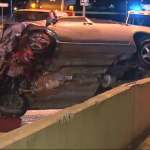Bike Safety for Cyclists and Motorists
It’s National Bike Month, the perfect time to highlight bike safety! According to the Insurance Institute for Highway Safety (IIHS), the most serious injuries are to the head in motor vehicle crashes involving cyclists. Sometimes drivers do not see cyclists because of the dark, weather conditions, not paying attention or distracted driving. It is the cyclist who is most likely to be injured.
The Centers for Disease Control and Prevention (CDC) reveals that Children (5-14 years old) and adolescents (15-19 years old) have the highest rates of nonfatal bicycle-related injuries. They account for more than one-third of all bicycle-related injuries seen in U.S. emergency departments. However, males suffer injuries more often on bicycles than females. The largest number of men injured are between 20-24 years old, according to the NHTSA. Adults who are age 50-59 have the highest bicycle death rates.
According to the National Highway Traffic Safety Administration (NHTSA), Americans are increasingly bicycling to commute, for exercise, or just for leisure. By law, cyclists have the same rights and responsibilities as motorists on the roadway. The CDC reveals that most bicyclist deaths occur in urban areas and at non-intersection locations. Following the rules of the road and being mindful of each other helps motorists and cyclists avoid crashes. There are strategies both can do to be more aware of each other’s intentions. The following NHTSA recommended tips help reduce the risk of a crash and prevent bicycle-related injuries and deaths:
- All cyclists, regardless of age, wear equipment to protect you and be more visible to others, such as a bike helmet, bright clothing (during the day), reflective gear, and a white front light and red rear light and reflectors on your bike (at night, or when visibility is poor).
- Ride a bike that fits you and that works.
- Ride one per seat, with both hands on the handlebars, unless signaling a turn.
- Carry all items in a backpack or strapped to the back of the bike.
- Tuck and tie your shoe laces and pant legs so they don’t get caught in your bike chain.
- Plan and choose routes with less traffic and slower speeds, or away from traffic altogether, in a bike lane or on a bike path.
- Ride in the same direction as traffic, and obey street signs, signals, and road markings, just like a motor vehicle.
- Assume the other person doesn’t see you; look ahead for hazards or situations to avoid that may cause you to fall such as debris, pebbles, potholes, grates and train tracks.
- Do not text, listen to music or use anything that distracts you by taking your focus off the road and traffic.
Suggestions for motorists include:
- Yield to cyclists as you would motorists and do not underestimate their speed.
- Avoid turning in front of a cyclist traveling on the road or sidewalk, often at an intersection or driveway.
- Search your surroundings for other vehicles, including bicycles, in parking lots, at stop signs, when packing up, or when parking.
- Look to the right and behind to avoid hitting a cyclist approaching from the right rear when turning right on a red light.
- Obey the speed limit, reduce speed for road conditions and drive defensively to avoid a crash with a cyclist.
- Give cyclists room. Do not pass too closely. Pass cyclists as you would any other vehicle—when it’s safe to move over into an adjacent lane.
Contact us if you or a loved one suffered a Louisiana bicycle-related injury from being hit by a motor vehicle, at no fault of your own. You may be able to recover compensation for your injury, medical bills, pain and suffering and more. Our personal injury lawyers offer a free initial consultation and also represent families in wrongful death cases.




